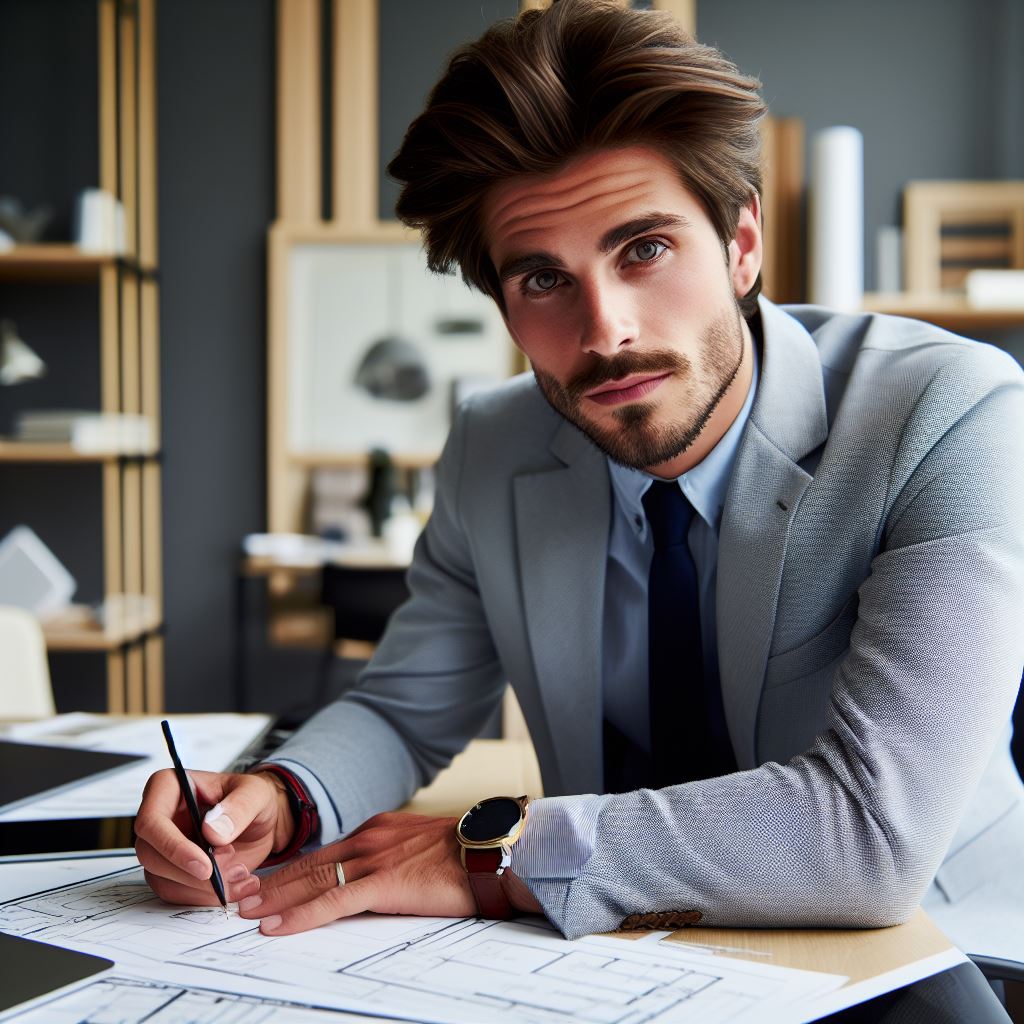Introduction
Definition of Freelance Artist
Freelance artists are independent creators offering their skills in a diverse range of artistic endeavors.
Overview of the American Gig Economy
The American gig economy, characterized by short-term contracts and freelancing, has rapidly grown, offering both opportunities and challenges.
Challenges Faced by Freelance Artists
Navigating this dynamic landscape, freelance artists encounter numerous challenges, from inconsistent income streams to fierce competition for projects.
Unpredictable work availability forces freelancers to master the art of financial planning, ensuring stability in an ever-changing market.
The absence of employee benefits like health insurance places the onus on freelancers to secure their well-being, adding an extra layer of complexity.
Creative expression often collides with the demanding nature of deadlines, requiring freelancers to strike a delicate balance between quality and efficiency.
Additionally, the struggle to establish a robust online presence is heightened, as digital platforms become saturated with aspiring artists vying for attention.
In this section, we delve into these challenges, offering insights and strategies to empower freelance artists in overcoming hurdles and thriving in the American gig economy.
Building a Strong Personal Brand
Importance of developing a unique style
- To stand out in the competitive gig economy, it is vital for freelance artists to develop a unique artistic style.
- Having a distinctive style allows artists to differentiate themselves from others, attracting clients who value their specific aesthetic.
- By consistently expressing their individuality through their work, artists can establish a recognizable brand identity.
- A strong personal style also helps artists establish themselves as experts in their chosen niche, making them more sought-after.
- Developing a unique style takes time and experimentation, but it is a worthwhile investment for freelance artists.
Creating a portfolio to showcase your work
- A portfolio is an essential tool for freelance artists to showcase their skills, experience, and range of work.
- Including a variety of high-quality samples in the portfolio demonstrates versatility and attracts potential clients.
- Freelance artists should organize their portfolio in a visually appealing and easy-to-navigate format.
- Including a brief artist statement can help clients understand the artist’s inspirations, goals, and creative process.
- Regularly updating and curating the portfolio ensures that it accurately represents the artist’s current abilities and style.
Utilizing social media and online platforms for self-promotion
- Social media platforms like Instagram, Twitter, and Facebook are powerful tools for freelance artists to promote their work.
- Artists should create professional profiles that reflect their brand and consistently share their latest projects.
- Engaging with followers and other artists through comments, likes, and shares can help build an online community.
- Online platforms specifically designed for artists, such as Behance or Dribbble, provide additional opportunities for exposure.
- Collaborating with influencers or participating in online art challenges can help freelance artists gain visibility.
Building a strong personal brand is crucial for surviving as a freelance artist in the American gig economy.
Developing a unique style allows artists to stand out and attract clients who appreciate their individuality.
A carefully curated portfolio serves as a tangible representation of an artist’s skills and showcases their versatility.
Utilizing social media and online platforms offers freelance artists valuable promotional opportunities and helps them build an online presence.
By investing time and effort into building a strong personal brand, freelance artists can increase their chances of success in the gig economy.
Read: Mastering the Business Side of Graphic Design in the US
Navigating Client Relationships
A freelance artist in the American gig economy needs to navigate client relationships effectively to thrive in the industry.
This secion discusses how to establish clear expectations and boundaries, improve communication and negotiation skills, and build long-term client relationships.
Establishing clear expectations and boundaries
- Define project scope, deliverables, and timeline with clients upfront to avoid misunderstandings.
- Set boundaries on revisions, additional work beyond the initial agreement, and payment terms.
- Use contracts or written agreements that clearly outline the responsibilities of both parties.
- Regularly communicate progress and involve clients in decision-making to keep expectations aligned.
- Be transparent about limitations, availability, and expectations to avoid disappointments later on.
Effective communication and negotiation skills
- Listen actively to clients’ needs and concerns to demonstrate empathy and understanding.
- Clearly articulate ideas, suggestions, and any limitations to ensure effective collaboration.
- Respond promptly to client inquiries, keeping them informed about project status and updates.
- Practice active problem-solving, addressing any conflicts or issues with professionalism.
- Develop negotiation skills to discuss project fees, deadlines, and scope adjustments with clients.
Building long-term client relationships
- Understand the importance of client retention and repeat business for freelance success.
- Provide exceptional customer service by going above and beyond to exceed client expectations.
- Nurture professional relationships by staying in touch with previous clients and expressing gratitude.
- Seek feedback from clients to continuously improve the quality of work and client satisfaction.
- Offer loyalty discounts or incentives to encourage clients to continue working with you.
In essence, successfully navigating client relationships is crucial for freelance artists in the American gig economy.
By establishing clear expectations and boundaries, improving communication and negotiation skills, and building long-term client relationships, freelancers can increase their chances of survival and success in this competitive industry.
Read: Grants and Scholarships: Financial Aid for US Artists
Managing Finances and Pricing
Setting fair and competitive rates
- Research the market to determine the average rates for freelance artists in your field.
- Consider your experience, skill level, and the value you bring to your clients when setting your rates.
- Aim for a rate that is competitive but also reflects the quality of your work and expertise.
- Regularly evaluate and adjust your rates as you gain more experience and improve your skills.
Budgeting and tracking business expenses
- Create a detailed budget that includes all of your business expenses, such as art supplies, software subscriptions, and marketing costs.
- Track your expenses meticulously to ensure you know exactly how much money is going in and out of your business.
- Use accounting software or apps to streamline the process and make it easier to manage your finances.
- Review your budget regularly and identify areas where you can cut costs or make adjustments to improve your financial stability.
Understanding tax obligations and financial planning
- Consult with a tax professional to understand your tax obligations as a freelance artist.
- Keep track of your income and expenses throughout the year to make tax time less stressful.
- Set aside a portion of your earnings for taxes and any other financial obligations, such as retirement savings or healthcare expenses.
- Consider working with a financial advisor to help you plan for long-term financial goals and stability.
Managing finances and pricing services right are vital for survival in the American gig economy. Set competitive rates, adjusting as needed.
Transform Your Career Today
Unlock a personalized career strategy that drives real results. Get tailored advice and a roadmap designed just for you.
Start NowResearch industry averages and factor in your expertise. Regularly assess and raise rates with increased experience and improved skills.
Maintain financial stability by budgeting and meticulously tracking all business expenses. Use accounting software for efficient financial management.
Review your budget regularly, making necessary adjustments for improved financial health. Understand tax obligations; consult a professional and track income and expenses consistently.
Allocate a portion of earnings for taxes and financial responsibilities. Engage a financial advisor for long-term stability, retirement planning, and achieving financial goals.
Active financial management, fair rates, and strategic planning ensure success in the gig economy. Stay informed, organized, and focused on financial objectives.
Read: Diversity in US Graphic Design: Celebrating Unique Voices

Finding Consistent Work
Networking within the industry
- Attend industry events, conferences, and art exhibitions to meet potential clients and colleagues.
- Join local art groups, professional associations, and online forums to expand your network.
- Attend art workshops or classes where you can meet fellow artists and potential collaborators.
- Participate in art competitions, showcases, and exhibitions to increase your visibility in the industry.
- Establish strong relationships with clients and colleagues through regular communication and follow-ups.
Utilizing online job platforms and freelancer websites
- Create a compelling online portfolio showcasing your best work and skills.
- Sign up for popular online job platforms and freelancer websites such as Upwork and Freelancer.
- Regularly update your profiles and portfolios on these platforms to attract potential clients.
- Search for relevant job postings and submit well-crafted proposals that highlight your expertise.
- Take advantage of the rating and review system to build a positive reputation as a freelance artist.
Collaborating with other professionals and joining artist communities
- Reach out to other artists, designers, and creative professionals for collaboration opportunities.
- Join local artist communities, co-working spaces, or art studios where you can find like-minded individuals.
- Attend art workshops, masterclasses, or artist residencies where you can connect with professionals in your field.
- Participate in group projects or exhibitions to showcase your work and collaborative skills.
- Create partnerships with other freelancers or agencies to offer complementary services to clients.
In review, surviving as a freelance artist in the American gig economy can be challenging, but finding consistent work is possible through various strategies.
Networking within the industry helps you establish valuable connections and expand your professional circle.
Utilizing online job platforms and freelancer websites can provide access to a wide range of potential clients.
Collaborating with other professionals and joining artist communities allows for mutual support, creative exchange, and collaborative opportunities.
By consistently implementing these approaches, freelance artists can increase their chances of finding consistent work and thriving in the gig economy.
Read: From Freelance to Firm: Graphic Design Careers in the US
Balancing Work and Personal Life
Achieving a healthy balance between work and personal life is crucial for freelance artists in the American gig economy. Here are some strategies to consider:
Establishing efficient work routines and schedules
- Create a designated workspace that helps you focus and separate work from personal life.
- Set specific working hours and stick to them, avoiding distractions during these periods.
- Organize tasks and prioritize them to ensure you complete them in a timely manner.
- Utilize productivity tools like project management software or time-tracking apps to stay organized.
- Take short breaks throughout the day to prevent burnout and maintain productivity.
Avoiding burnout and maintaining work-life balance
- Set boundaries by defining when work ends, and personal time begins.
- Learn to say no to projects that would compromise your well-being and overload your schedule.
- Encourage open communication with clients and let them know your availability and limitations.
- Delegate or outsource tasks when necessary to alleviate workload and create more free time.
- Engage in activities that promote relaxation and rejuvenation outside of work hours.
Cultivating self-care practices to enhance productivity and creativity
- Make time for hobbies or activities that inspire you and foster creativity.
- Regularly exercise to maintain physical and mental well-being, reducing stress levels.
- Practice mindfulness techniques like meditation or journaling to improve focus and clarity.
- Establish a consistent sleep schedule to ensure you are well-rested and energized.
- Connect with a supportive community of fellow artists to share experiences and gain insights.
By implementing these strategies, freelance artists in the American gig economy can cultivate a better work-life balance, leading to increased productivity, creativity, and overall satisfaction in their professional and personal lives.
Explore Further: Role of Typography in Packaging Design
Adapting to Changes in the Gig Economy
A successful freelance artist in the American gig economy understands the importance of adapting to changes.
In this section, we will explore three key strategies for surviving and thriving in an ever-evolving landscape.
Embracing new technology and trends
- Stay updated with the latest software and digital tools to streamline your work process.
- Explore emerging platforms and marketplaces to expand your client base and showcase your art.
- Invest in high-quality equipment and stay abreast of technological advancements that can enhance your artistic output.
- Collaborate with tech-savvy professionals to leverage their expertise and stay ahead of the curve.
Continuously updating skills and staying relevant
- Attend workshops, seminars, and art-related events to learn new techniques and gain insights from industry experts.
- Engage in online art communities and forums to exchange ideas and stay connected with other artists.
- Follow art publications and blogs to stay informed about the latest trends and artistic movements.
- Take additional courses or certifications to diversify your skill set and remain competitive in the market.
Diversifying income streams and exploring multiple creative opportunities
- Seek out complementary income streams, such as teaching art classes or selling merchandise featuring your artwork.
- Consider licensing your art for various products, such as prints, home decor, or apparel.
- Explore freelance opportunities beyond traditional art avenues, such as graphic design or illustration for marketing campaigns.
- Network with potential clients and collaborators from different industries to widen your range of opportunities.
- Create a portfolio that showcases your versatility and ability to adapt to various creative projects.
- Stay open-minded and embrace unconventional projects that may lead to new and exciting artistic ventures.
By embracing new technology and trends, continuously updating skills, and diversifying income streams, freelance artists can navigate the gig economy successfully.
Adaptability is the key to survival, and those who stay proactive and open to change are more likely to thrive in this ever-evolving landscape.
Delve into the Subject: Why User Feedback Is Crucial in UX/UI Design
Transform Your Career Today
Unlock a personalized career strategy that drives real results. Get tailored advice and a roadmap designed just for you.
Start NowConclusion
Recap of the key points discussed
Throughout this section, we have explored the challenges and opportunities faced by freelance artists in the American gig economy.
We have discussed the importance of diversifying skills, building a strong portfolio, and networking to secure a consistent flow of work.
It is also crucial to embrace online platforms and marketing techniques to gain visibility and reach potential clients.
Encouragement and support for freelance artists in the gig economy
To all the freelance artists out there, remember that you are not alone in this journey. Seek support from other artists, whether it’s through online communities or local meetups.
Collaborate, share experiences, and learn from each other. Surround yourself with like-minded individuals who understand your struggles and can offer valuable advice.
Final thoughts on the potential for success and fulfillment as a freelance artist in America
While the gig economy can be challenging, it offers vast opportunities for freelance artists to thrive. With the right mindset, dedication, and continuous self-improvement, success and fulfillment are within reach.
By embracing the ever-changing landscape of the art industry and adapting to new trends and technologies, freelance artists can carve their own path and create meaningful, impactful work.
In sumary, surviving as a freelance artist in the American gig economy requires resilience, adaptability, and a relentless pursuit of excellence.
By leveraging the power of online platforms, networking, and seeking support from fellow artists, freelancers can flourish despite the uncertainties.
So, take the plunge, believe in your talent, and remember that as a freelance artist, your potential for success and fulfillment is limitless.
[E-Books for Sale]
The Big Book of 500 High-Paying Jobs in America: Unlock Your Earning Potential
$19.99 • 500 High-Paying Jobs • 330 pages
Explore 500 high-paying jobs in America and learn how to boost your career, earn more, and achieve success!
See All 500 High-Paying Jobs of this E-Book
1001 Professions Without a Degree: High-Paying American Jobs You Can Start Now
$19.99 • 1001 Professions Without a Degree • 174 pages
Discover 1001 high-paying jobs without a degree! Unlock career tips, skills, and success strategies for just $19.99!




